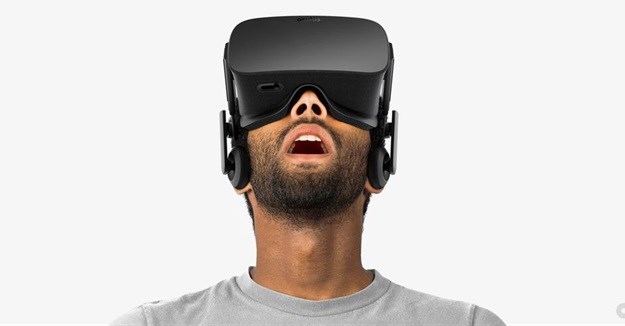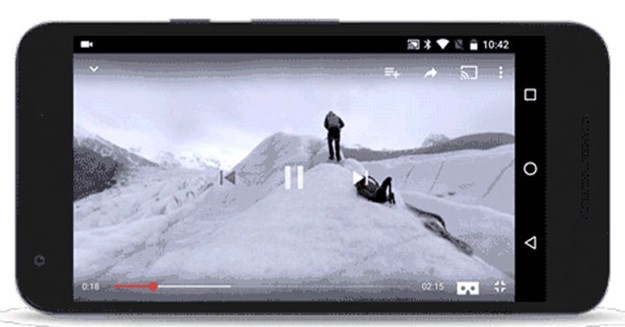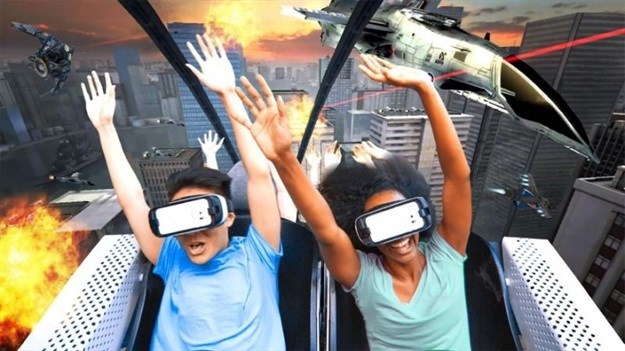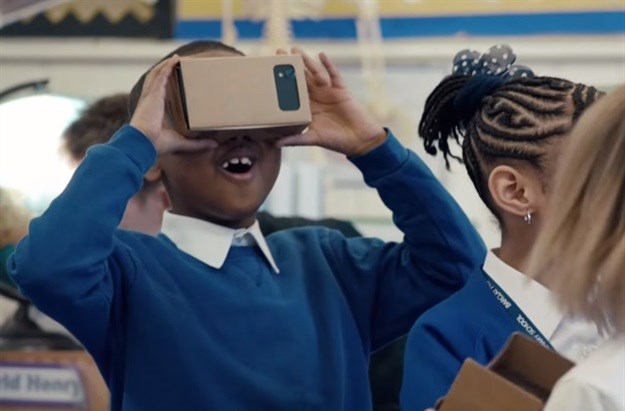
Top stories


Marketing & MediaCammy Msimango on finding her footing in South Africa’s fast-moving digital newsroom
Esther Tomorrow, MDNTV 20 hours




More news




The minute I placed the Oculus-powered headset on, I felt far more immersed in the virtual reality experience than I did with any other of the mediums responsible for transmitting content available to us as brands and marketers today. I explored the World of Cirque du Soleil in high definition video detail (I don’t really like clowns, so just how immersive the experience was, became more and more of a problem the longer I spent next to their virtual clown incarnations).
I couldn’t remember the last time that I devoted that much attention and engagement to anything, which is the starting point of an assessment for what VR really means to brands and marketers in a world where we’re all vying incredibly hard for the very little interest and engagement that is available to capture our target audiences.
It is still fairly early days for virtual reality, but there is no doubt that VR and 360-degree video is no longer the stuff of science fiction and is very fast gaining prominence in the mainstream, with Global search interest on Google growing by nearly 4 times in the last year (Google Data, Global, May 2016). What does this really mean for brands, storytellers and marketers?
With the rise of the mobile device and its capability to form the basis of the Google Cardboard or even Samsung Gear/HTC headset experience, VR is now widely available to the consumer. This has resulted in a plethora of VR content being produced for consumption (each video on YouTube can now be viewed in VR, making it the globe's largest library of VR content). VR has now begun to surpass regular film as the most immersive storytelling medium available to us today, allowing the consumer to go beyond “just watching” to feeling like they’ve actually been transported to a completely different environment, which can be explored at will.

With VR and the cameras that are currently being developed to capture these experiences, you have the chance to visit far away island beach destinations or experience the football game from the best seats in the stadium, while sitting on your couch at home. As brands and marketers, we need to start thinking about providing these experiences in earnest, as to not miss out on a wave of consumers who want to spend more time engaging in an environment that is essentially put there by us.
360-degree video is a variation of virtual reality, which allows consumers to explore video from every angle imaginable without the need for a headset, simply by swiping the screen or tilting their phones from side to side. Uploads of 360-degree videos continue to grow and have doubled over the past three months (YouTube Data, June 2016) and brands are already making huge strides in effectively using the technology to tell stories to consumers. BMW recently put together a brilliant example of 360-degree video to engage users with a car race featuring the “not terrible to look at” Gigi Hadid and a few of their gorgeous BMW M2s. The execution allowed consumers to look wherever they wanted in order to try and work out which car Gigi was in, as the drivers snaked between each other across the length of the shot. In order to fully harness the potential of VR and 360 video, we as brands, creators and marketers need to think differently about how stories are told.
It is no longer good enough to take an above-the-line TVC, slap it on YouTube, Facebook, Instagram and Twitter with some really clever targeting put into place by a capable digital media strategist and hope for the best. VR allows viewers to be active participants in brand stories – they can look wherever they want, when they want, and we need to be sure that if we are doing VR that the story really is EVERYWHERE, allowing us to create empathy and ultimately a greater impact on the viewer. While immersed in a VR experience, you can pretty much feel the same knot in your stomach that you would when falling from the top of a rollercoaster in real life and it is fairly apparent that VR is no longer just a novelty, having some real applications for brands today.
Before we all go VR crazy and start piling all of our budgets into creating and promoting these immersive experiences with paid media, we have to be honest about what we can accomplish at this early stage. In its current iteration VR isn’t exactly going to sell toothpaste if you’re Unilever, but if you’re the likes of an automotive giant or a world-class football team like Manchester United, people are going to seek out this more immersive type experience. We are however, blessed with an opportunity to explore something completely new, with no real established rules, which means we’re able to create a brand new experience for the consumer, creatively conceptualised from beginning to end (which if we’re completely honest, doesn’t happen in advertising very often these days).

For the first time, we’ll be able to remove the screen (TV, computer, mobile) as a barrier between our story and the viewer, engulfing them in the brand experience. Has a brand new pair of Adidas running spikes being released? Why not put the user in the shoes of Wayde van Niekerk breaking the 400m world record at the Olympic Games? As humans, we’re hardwired to use all of our senses to react to the virtual reality experience, which really puts VR streaks ahead of anything else we’re using to tell stories in our ad campaigns.
With the VR experience being one that is housed digitally, we’re also able to get more granular insight into viewer behaviour, gaining a far deeper understanding of how our piece of content impacted the consumer. We’re able to track clicks, post-click activity, where viewers are looking and with mobile in particular, we can also see activity based on location and device. This type of insight is far more useful than metrics associated with TV ads of old, which only give a “general sense” of whether someone saw our ad, already giving VR a one-up over the rest. Going back to the previous example around BMW and Gigi, we could very easily learn whether it was the car or in fact the supermodel that really drove more engagement and adjust our strategic approach to content and asset generation based on this insight.
As I alluded to right at the beginning of this article, I feel that where VR really starts to show true value for brands, marketers and creators is in its ability to provide a level of interactivity and user engagement that is unparalleled, when compared to the other mediums at our disposal. The user really does feel like they are a part of the story and are free to interact, play and engage with the product on an entirely new level, not possible outside of the physical world. VR allows the user to exist in the content or ad itself, we’ll be able to unlock a very emotive and powerful channel in which we can sell products and stories, that allows us to make real connections that count in an attention-starved marketing landscape.
In a recent study for Columbia Films conducted by Google, they found that 360 video drives viewers to share, subscribe and view other videos more than standard video. The 360 ad in the experiment was found to have outperformed the standard ad on all the earned action metrics, including views, shares, and subscribes. In total, the 360 ad drove 41% more earned actions than the standard ad. It also drove more engagement with Columbia's YouTube channel than the standard ad did, with the 360 ad having a 46% higher view count at the end of the experiment than the standard full-length piece (with messaging apps like WhatsApp and iOS messenger listed among the highest traffic sources for the 360 version). This is all fairly good news for brands and marketers as it means that the VR viewing experience not only makes people want to watch and engage but also share (gaining masses of earned media in the process).
As long as content continues to be free and of a fairly high quality, we will continue to see the mass consumer adoption of VR, which will in turn allow us to continue testing and exploring the medium as a viable channel for creating awareness, engagement and ultimately sales. The possibilities are endless and soon we’re going to be seeing VR extend beyond just video, to include smell and possibly one-day taste (although making fart smells probably isn’t the most alluring of reasons to do so)…
Before pouring all of our budgets into VR and paid media to support it, there are a few things to consider:
Is your VR experience going to give the consumer an experience they otherwise wouldn’t be able to have?
Are you able to give consumers a better “feel” for your product?
Do you have an appropriate strategy in place to use the insights from metrics that are available in VR and digital that will allow their use in shaping how you communicate to the consumer?
These are very exciting times and we’ve only just seen the tip of the VR iceberg – as long as we keep the consumer at the central point of everything we can do in the space, this medium could very well end up being the strongest in terms of generating awareness, engagement and sales through rich stories for brands for a long time to come.

